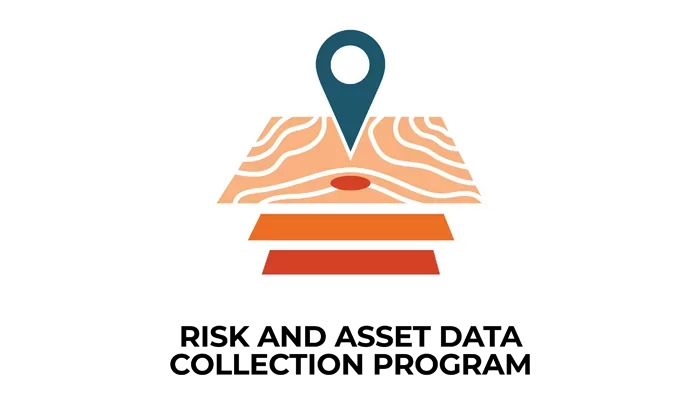
Allocation: $130M
This Program will produce layers of data about dangers, assets, and risks with the purpose of complementing cadastral and land use data produced by the GeoFrame program. The objective is to improve citizens, business, private industry sector, mayors, governor, and other leaders’ capacity to make decisions based on data that originates from a global and updated comprehension of the Island’s risks and assets.
RISK AND ASSET DATA COLLECTION PROGRAM
Puerto Rico is an Island located on an active fault line and directly in the path of hurricanes and tropical storms that move from the Atlantic Ocean into the Gulf of Mexico or the Caribbean Sea. It is subject to increasing impacts of sea-level rise and rising intensity of storms and weather events. Although the Island is vulnerable to a wide variety of hazard events, it does not currently hold or maintain comprehensive data related to lifeline assets or the risks and hazards that could impact the social, ecological, or built environment. While many of these datasets exist, they are held and maintained by different public and private entities with varying data standards. For this reason, access to critical datasets is limited and, when available, often inconsistent between regions or entities; a challenge PRDOH encountered during the preparation of the CDBG-MIT Action Plan.
GUIDELINES
| File | Action |
|---|---|
| Program Guidelines (V1.0) -- Posted on 07/13/2023 | Download |
CURRENT SITUATION
As part of the advances and the developments of new technology applicable to the Planning Process, the Puerto Rico Department of Housing (PRDOH) is proposing the creation of a Digital Twin City for Puerto Rico. This would pave the way for a virtualization of the living environment of the citizens, providing cutting edge technological tools that will support decision making in challenging social, environmental and economic scenarios.
Puerto Rico, in the context of a Caribbean Archipelago, is not exempt from the challenges that represent to the long-term planning efforts, and the consequences related to the dynamics of climate change.
PROJECTION
The Risk and Asset Data (RAD) Collection Program will provide extensive risk and asset data aggregation, production, analysis, development, and maintenance of critical data tools, and meaningful stakeholder outreach and engagement. It is intended to enhance the ability of citizens, private sector business and industry, mayors, governors, and other leaders to make data-driven decisions that are rooted in an up-to-date comprehensive understanding of hazards, risks, and assets in Puerto Rico. In addition, this Program encourages a collective understanding of how mitigation investments reduce risks to people, homes, neighborhoods, cultural and historic resources, ecosystems, and lifelines.
The purpose of Mitigation planning is to support the identifying, assessing, and reduction of the long-term risk to life and property from hazardous events. The RAD Program makes the role of planning central in evaluating and updating risk and asset data, which will support the need to ensure mitigation project activities do not result in adverse impacts.
By achieving the RAD Program goals and outcomes, Puerto Rico will be in the front line promoting the United Nations Sustainable Development Goals (UNSDGs), working directly with Disaster Risk Reduction, Sustainable Transportation, Sustainable Cities and Human Settlements, Build Resilient Infrastructure, and Economic Growth, among others.
Responding to Recovery and Mitigation Needs
The RAD Program data assets production will be aligned with the Federal Emergency Management Agency (FEMA) Community Lifelines used to develop the CDBG-MIT Risk Assessment and the Risk Based Needs Assessment for Puerto Rico, which are as follows:

Energy

Food, Water and Shelter

Health and Medical

Safety and Security

Comunications

Hazardous Materials

Transportation
Better access to quality data related to those Lifelines will be achieved, existing data sets will be improved, and new data sets will be derived to better inform the citizens of Puerto Rico. In addition to data associated with the FEMA Lifelines, the RAD Program seeks to improve existing data available for human and natural hazards, historic and probable consequences from those hazards, and detailed information on the populations and assets at risk.
The system will be developed by the System Planning Vendor Services Provider, who will oversee the collaboration between different entities for the integration of data. This data will be compiled into a system that merges with, or complements the systems developed under the CDBG-DR Program, such as GeoFrame’s Spatial Data Infrastructure (SDI).
The CDBG-MIT Risk and Asset Data Collection Program (RAD) is a GIS-focused program and provided the opportunity to build upon GeoFrame Program’s structure, stakeholders, and formalized agreements. This program synergy between GeoFrame and RAD, and the status of program outcomes, brought upon PRDOH a:
New strategy for GEO/RAD Program implementation











